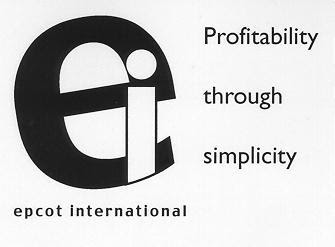The answer to the question is “May be and depends”. This is
not the answer everyone would be expecting from anyone who is proponent of
“continuous processing”. “May be or depends” needs further explanation. I
describe pharmaceutical manufacturing processes as follows.
API
(drug) + Formulation processing/packaging = Dispensable drug dose
We all know that each component and the resulting product
must meet the established performance and quality standards and that is a must.
Annual volume, process design and equipment are some of the factors that direct
us to the right process selection.
Table 1 illustrates the amounts of API (active
pharmaceutical ingredient) needed for various dosages to serve variable
population size. This table directs us to the answer to the “May be and
depends” question between batch and continuous processing in pharmaceutical
manufacturing. Breaking down the overall manufacturing process described above
assists in rationalization.
|
Dose
Milligram
|
Tablets
per
day
|
Doses
per
year
|
Patients,
Millions
|
Tablets/yr.
Millions
(1)
|
Tablet
Process
|
API
needed,
Kg./ yr. |
API
Process
|
|||
|
|
|
|
|
|
Batch
|
Continuous
|
|
Batch
|
Continuous
|
|
|
|
|
|
|
|
Number
of plants
|
|
Number
of plants
|
|||
|
0.1
|
1
|
365
|
10
|
365
|
*
|
**
|
456
|
1
|
No
|
|
|
0.1
|
1
|
365
|
100
|
3650
|
*
|
**
|
4,563
|
1
|
No
|
|
|
0.5
|
1
|
365
|
500
|
91,250
|
*
|
**
|
114,063
|
1
|
**
|
|
|
10
|
1
|
365
|
100
|
365,000
|
*
|
**
|
456,250
|
*
|
**
|
|
|
10
|
1
|
365
|
500
|
1,825,000
|
*
|
**
|
2,281,125
|
*
|
1-2
|
|
|
50
|
1
|
365
|
10
|
182,500
|
*
|
**
|
228,125
|
*
|
**
|
|
|
250
|
1
|
365
|
500
|
45,625,000
|
*
|
**
|
57,031,250
|
*
|
5-7
|
|
|
500
|
1
|
365
|
500
|
91,250,000
|
*
|
**
|
114,062,500
|
*
|
10-14
|
|
|
*
Multiple batch plants would be needed to meet the global demand.
** Potential continuous process.
(1)
80% formulation and packaging yield.
|
||||||||||
Table
1
A quick review of the table suggests that between API
manufacture and formulation/packaging later has the highest potential to be a
continuous process. This observation is based on annual volume of the tablets
needed. It is expected that the formulation and packaging process steps are
adequately designed. Quality by Design (QbD) will be the rule for such
processes.
To serve 10 million population using 0.1 milligram dose
tablet, API volume is not large enough to have a continuous process. If the
equipment used to produce the APIs is going to stay the same as currently used,
less than optimum processes will stay in place. Since the companies with the
current manufacturing practices are able to achieve their profit margins they
do not have any incentive/justification to change their manufacturing practices
even if the methods are inefficient and highly un-sustainable. Such operations present
an excellent opportunity to improve yield, create sustainable processes, lower
manufacturing costs and improve profitability.
For continuous process to become a reality for APIs while
using the current equipment technologies, production volumes have to be about
750,000 pounds or higher per year per site or the size of equipment used has to
change to produce for lower volumes i.e. a complete paradigm shift is needed. A
single plant operating continuously (24/7/50) producing (750,000 pounds per
year) would produce about 110 pounds product per hour. Such plants, if they
become a reality, could significantly reduce the regulatory load significantly
and would produce highest quality product.
To serve 10 million people taking 0.1 milligram tablet per
day per year about 3.65 billion tablets would be needed. This is producing
about 8500 tablets per minute (80% operating rate) from a single manufacturing
train. A single continuous train that takes the API to a finished tablet is
very feasible provided the equipment is properly designed. Depending on the
size of the tablet, commercially available equipment can produce up to one
million tablets per hour. Through campaigns this particular train could also be
used to produce other drugs following cGMP practices. Multiple tableting and
packaging trains can be used to fulfill higher tablet needs.
As the dose and frequency needs increase, the needed API volume
increases and manufacturing trends toward continuous processes. Increased per
site production volume and process technologies can justify better
manufacturing methods that have higher yield and are sustainable. It is
possible that the companies might still use batch processing even if the total
API production volume could justify continuous manufacturing. This can happen
if the companies do not want to invest in better process technologies. If the companies
do not change their methods competition will force the change.
Based on the above review one can conclude that better than
70-80% of the APIs needed would be produced by batch process using existing
type of reactors, heat exchangers and other processing equipment unless the
existing equipment can be used creatively to develop continuous processes. This
is definitely possible. On the other hand better than 85-95% of the
formulations can be produced using continuous processes.
Above quick review demystifies “May be or depends” mystery
and shows us a clear path. The choice is ours to act.
Girish Malhotra, PE
EPCOT International
